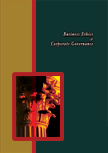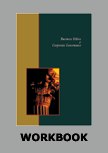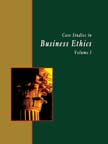Monsanto's 'Roundup Ready' Alfalfa Controversy
|
|
ICMR HOME | Case Studies Collection
Case Details:
Case Code : BECG078
Case Length : 13 Pages
Period : 1999-2007
Pub Date : 2007
Teaching Note :Not Available
Organization : Monsanto Company
Industry : Agricultural Biotechnology
Countries : US
To download Monsanto's 'Roundup Ready' Alfalfa Controversy case study
(Case Code: BECG078) click on the button below, and select the case from the list of available cases:

OR

Buy With PayPal
|
Price:
For delivery in electronic format: Rs. 200;
For delivery through Shipping & Handling Charges extra: Rs. 200 +Shipping & Handling Charges extra
»Business Ethics Case Studies
»
Business Ethics Short Case Studies
» Short Case Studies
» View Detailed Pricing Info
» How To Order This Case
» Business Case Studies
» Case Studies by Area
» Case Studies by Industry
» Case Studies by Company
Please note:
This case study was compiled from published sources, and is intended to be used as a basis for class discussion. It is not intended to illustrate either effective or ineffective handling of a management situation. Nor is it a primary information source.
Chat with us

Please leave your feedback

|
|




<< Previous
Excerpts
The Controversy
|
Alfalfa is a fodder crop for livestock (Refer to Exhibit IV for the picture of
alfalfa). It is one of the crops grown on a wide scale in the US. Alfalfa is
regarded as one of the best available animal feeds and is primarily used as food
for cows. Other livestock that feed on alfalfa include beef cattle, sheep,
chickens, turkeys, and horses.
Alfalfa sprouts are at times used as an ingredient in salads in the US,
Australia, and New Zealand. The tender shoots of alfalfa are also consumed in
some places as a leafy vegetable. Besides, the dehydrated alfalfa leaf is used
as a dietary supplement in the form of tablets, powders, and tea. Parts of the
alfalfa plant which are very old are, however, not eaten much because they have
high fiber content.
|

|
'Roundup'is trademark name for a herbicide glyphosate developed and produced by
Monsanto. This herbicide was used for killing weeds, particularly
perennials. Glyphosate was known to have a serious ecological impact and was
reported to be toxic to some beneficial predators like spiders, mites,
beetles and to detritivores like earthworms as well as to aquatic organisms
like fish. The Roundup herbicide was known to accumulate in fruits and
tubers, which raised questions on the safety of consuming them...
|
|
The Debate
Monsanto's RRA angered environmental groups, organic
farmers, and consumer groups who feared that biotech alfalfa would lead
to the creation of superweeds and would contaminate organic and
conventional varieties of alfalfa. They were apprehensive that this
would ultimately result in hampering the export business. Though RRA
created a huge uproar, it was not the first time that the Monsanto had
been the subject of criticism. In 2004, when the shareholders of
Monsanto requested the company to provide evidence which would prove
that the GM crops were safe, Hugh Grant, Chairman of the company, turned
down their plea saying, "We believe all of our products ... can be
safely used."... |
Exhibits
Exhibit I: Logo of Monsanto Company
Exhibit II: Monsanto's Stock Price Chart (June 2002 - May 2007)
Exhibit III: Quarterly Income Statement of Monsanto
Exhibit IV: Visual of Alfalfa
Exhibit V: Benefits from using Roundup Ready Technology
Exhibit VI: Varieties of Roundup Ready Products
Exhibit VII: Ten Findings of CFS about Roundup Ready Alfalfa
Exhibit VIII: Environmental Impact Statement of NEPA
Exhibit IX: Global Farm Income Benefit of GM Crops 1996-2004
|
|









